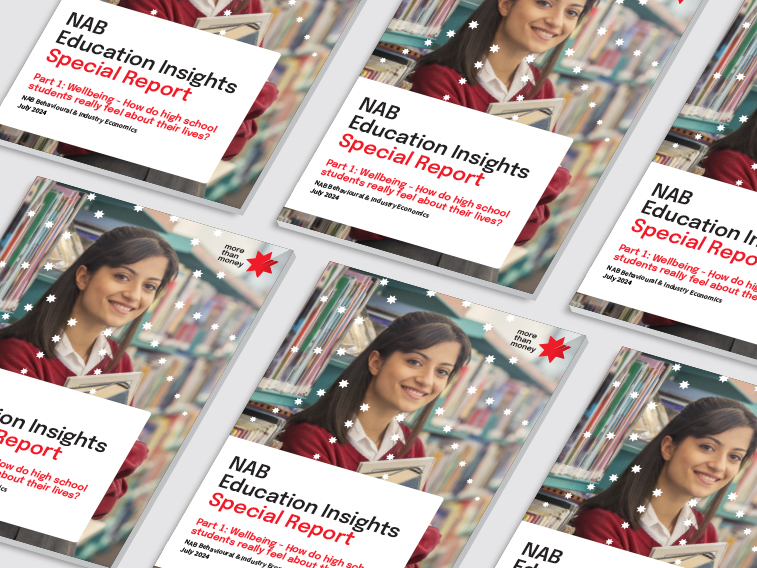How do high school students really feel about their lives? Download the report or watch the webinar recording to find out more.

Article
Boarding facilities are in hot demand by international parents with schools investing in more sophisticated residences.

Boarding facilities are in hot demand by international parents with schools such as Wesley College investing in more sophisticated residences.
With the boom in international students heading to Australia to study one of the many challenges has been a very basic one – how can we physically accommodate them.
For some leading secondary schools, it’s prompted a renewed look at the provision of boarding facilities with many now investing millions of dollars in innovative new accommodation that will deliver the kind of experience international students, and their parents, are looking for.
Boarding facilities are in hot demand by international parents with schools who offer enrolments to secondary student visa holders, says Annie Weatherburn, Managing Director of Australian Boarding Schools International (ABSI). The organisation represents 15 independent Australian boarding schools across Australia with their international admissions, marketing and recruitment and markets these schools to 15 countries.
“Boarding schools, particularly in Sydney and Melbourne, are in so much demand from international students, especially from the Hong Kong and China region, that they’re bursting at the seams,” according to Weatherburn, who says she’s seeing an increasing rise in enquiries from international families. She says the provision of quality boarding facilities is a key selling point for parents deciding where to place their children.
“Parents, particularly in countries such as Hong Kong, China and Thailand, are telling me they prefer boarding for their children, they are comfortable with boarding, the security and supervision, the structure and high-level care and academic tutoring assistance that boarding schools provide,” says Weatherburn. “Boarders do very well academically because of the attention and evening tutoring support provided in that environment.”
One of Melbourne’s leading independent schools Wesley College has made a return to boarding as part of its plan to respond to continuing interest of international students and their families for an Australian educational opportunity and experience, as well as to provide a richer learning experience for its domestic students.
At Wesley’s Glen Waverley campus, the college is investing around $17 million in its new “Learning in Residence” facility that will accommodate 136 students and associated dining and recreational facilities as well as staff accommodation for both international and local students when it opens late-2016. And there are more on the drawing board.
The new facility will resume a boarding tradition for Wesley that began with the school’s opening in 1866 but was abandoned in 1980 at the St Kilda Road campus when the school needed more room as it progressively introduced co-education from the mid-1970s. But these facilities bring the traditional old school boarding houses into the 21st century.
The Glen Waverley facility will be built adjacent to, and integrate with, the senior school at the campus. It forms part of the school’s long-term vision for the development of the school to meet both the needs of the growing influx of international students as well as its domestic students involved in continuing residential programs. These include its Clunes Year 9 program and the Yiramalay/Wesley Studio School, an indigenous student residential and educational program.
Wesley College’s Business Director and CFO Cameron Moroney says a key part of its international student strategy was the launch 18 months ago of its English Language Preparation Program on campus at Glen Waverley, which helps students gain confidence in their language skills while easing them into life at the school. Since the program’s launch the number of international full-fee paying students at the school has increased by 60 per cent.
“Our proposition is that when the student successfully goes through the assessment process to join Wesley, they will step off the plane in Melbourne and join Wesley,” he says. “They’re on campus; they’re in uniform while they’re undertaking their language studies. They’re part of our community straight away, finding their feet and building their confidence as their language capability improves, even before they start their mainstream enrolled school studies.”
Moroney says the school plans to continue to increase the number of boarding facilities available over time. It recently acquired 3400 square metres of land next to its senior school at its St Kilda Road campus for future development of the middle and senior schools including a potential residential program at the original St Kilda Road campus where boarding first started at the school in 1866.
With the Glen Waverley project, much thought has gone into creating a state-of-the-art boarding facility incorporating the latest thinking to optimise both the students’ comfort, pastoral care and their social and cultural experience, as well as their ability to excel academically.
“That’s something that’s absolutely important to the parents of both local and international families,” says Moroney. “When they sit down and talk through what we’re doing, they want to know their children are in a safe environment with a strong sense of community that encourages both education but also that wider cultural and social learning experience.”
Weatherburn says the demand for boarding accommodation could be seen as potential revenue opportunities for schools, but this is not what drives a school to provide boarding facilities.
“It’s a big investment to set up boarding facilities – with more children, comes more staff needed, in particular, high-quality pastoral care staff and supervisors. A school’s core purpose is providing children an education,” she says. “Schools need to ensure that they don’t put all their eggs in one basket and make sure they market in different countries around the world to continue to attract a diversity of cultures for the benefit of all students. It’s also very easy for schools to concentrate on the core overseas markets but if that market falls over that could be a problem.”
More from NAB:
© National Australia Bank Limited. ABN 12 004 044 937 AFSL and Australian Credit Licence 230686.